Feel free to download my CV.
Building telematics and IoT
Context
Buildings provide critical environments for businesses to operate. When buildings do not operate well or fail, the result can be commercially damaging and in more extreme cases, lead to reputational damage, injury, loss of life and litigation.
Business question
Can we provide our customers with real-time basis valuable building related analytics, reducing risks and improving building health, safety and efficiency analyzing building sensors?
Customer
Zurich Insurance Group
Zürich, Switzerland
The Approach
We needed to understand the nature building telematics thoroughly and quickly. We approached all aspects of the project collaboratively and spent most of our time working with Risk Engineers.
Insights from our discovery work indicated many areas where a web-based solution could help to run building more efficiently, effectively, safely and lower insurance premiums.
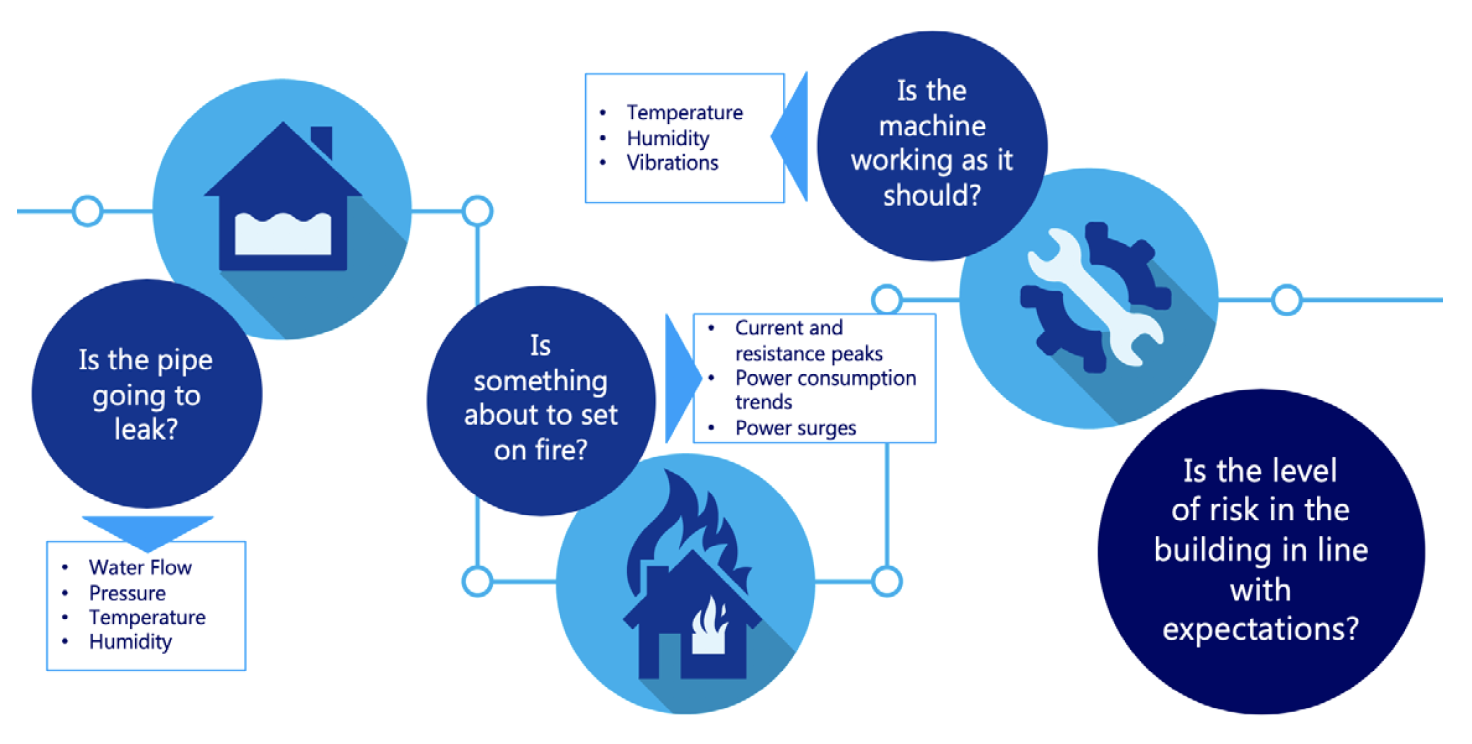
Value creation in commercial property

Technical solution pipeline
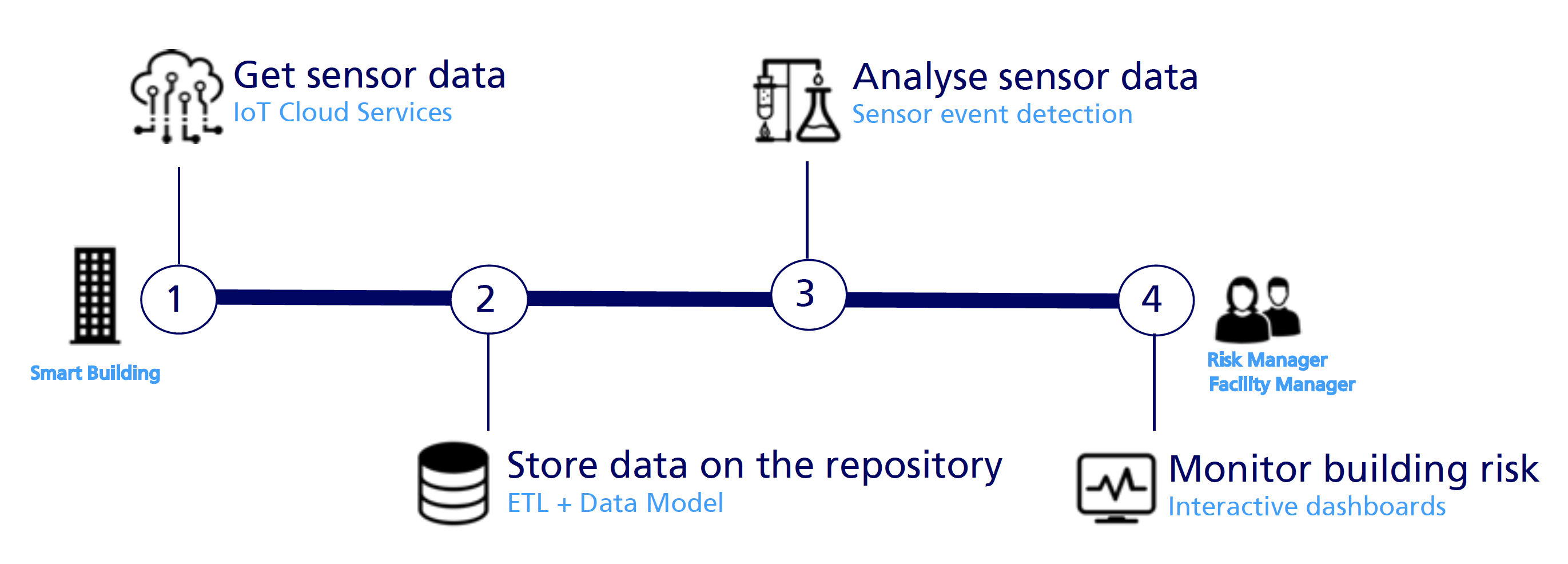
Structuring the content
Before starting any design, we spent a great deal of time making sense of workflows and existing data. This involved a tonne of anomaly analysis and categorisation work.

Whiteboard brainstorming
In order to help understand many of the complex processes involved in analytical solution, I mapped workflows on whiteboard. Doing so helped me to understand the particular points where our system could help in risk detection as well as highlight opportunities where we could really try to innovate.

Sketching interface
I used paper prototyping techniques to bring the designs to life and evaluate them with our users. This helped me work rapidly and led me to consider more ideas. Sketching many concepts helped me form a broader view of the system ensuring cohesive design.

Hi-fidelity wireframes
To move forward with the design I used InDesign to create sets of detailed mockups. This approach was beneficial in showing our stakeholders design progress, but was too time consuming to iterate at the pace required.
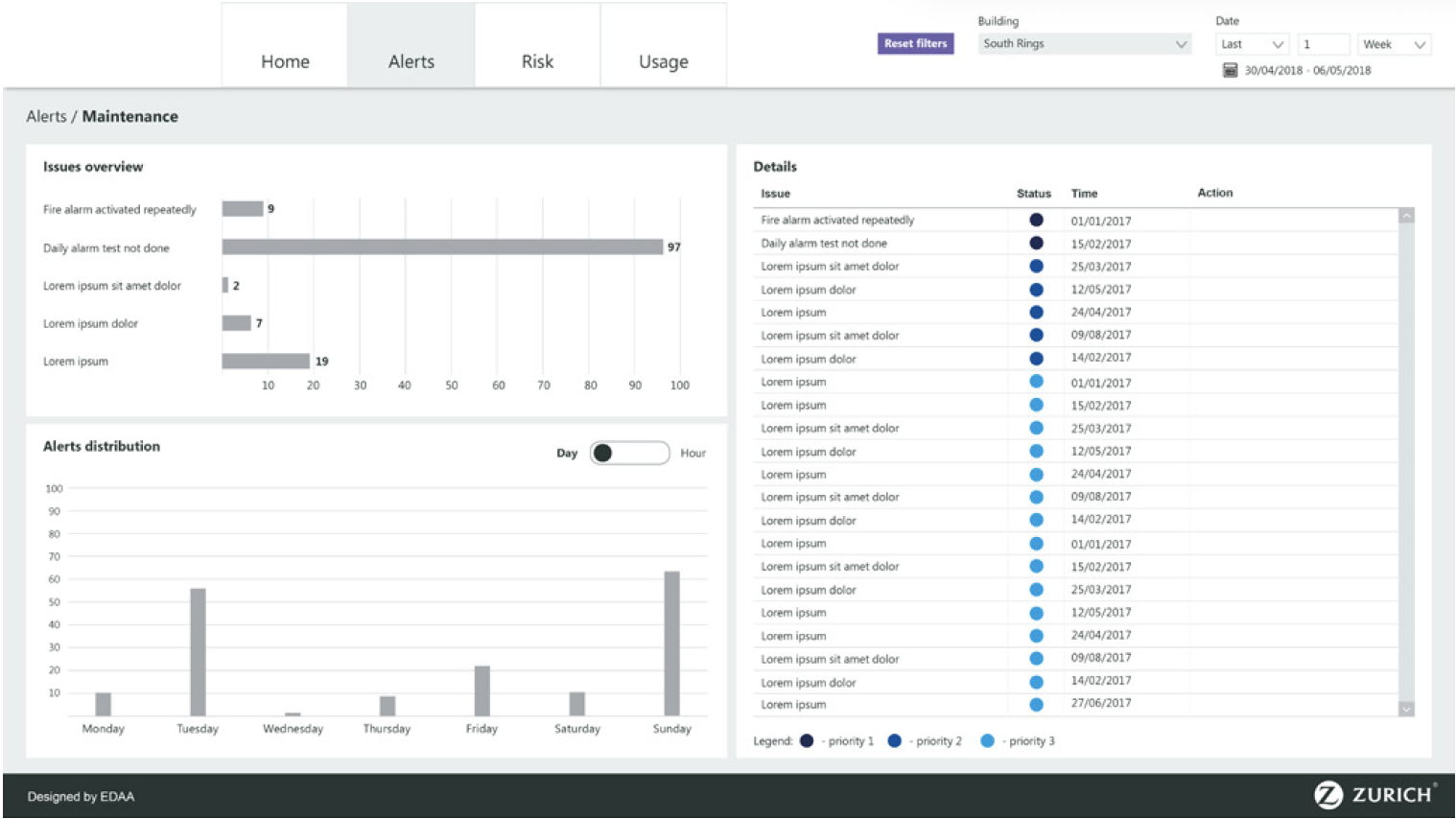
Prototyping
I worked closely with our lead developer to bring our designs to life as a working prototype. Communicating requirements face-to-face and discussing constraints and possibilities was an effective way of crafting information architecture. We were working collaboratively, testing constantly and iterating progressively.
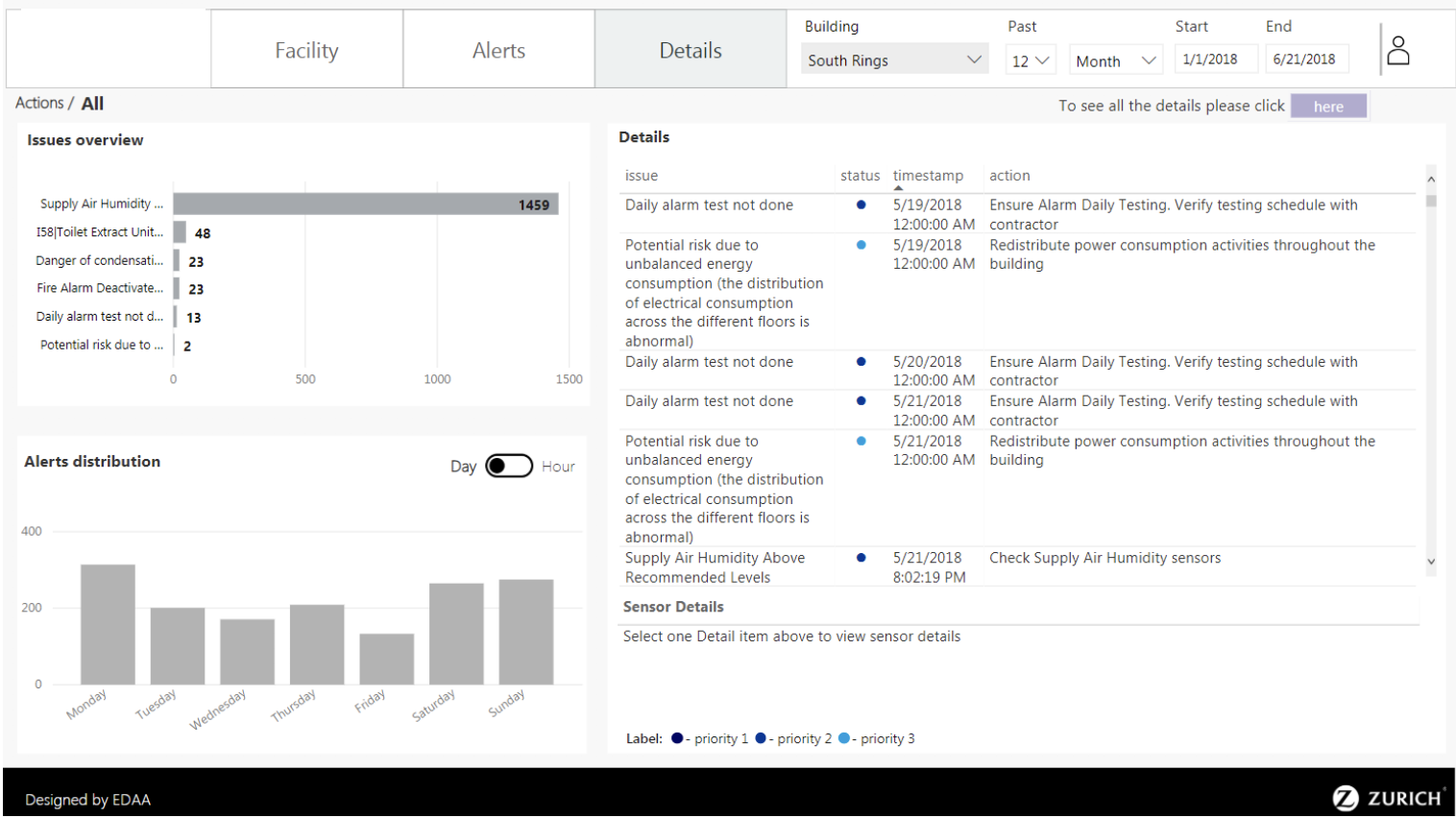
Final solution
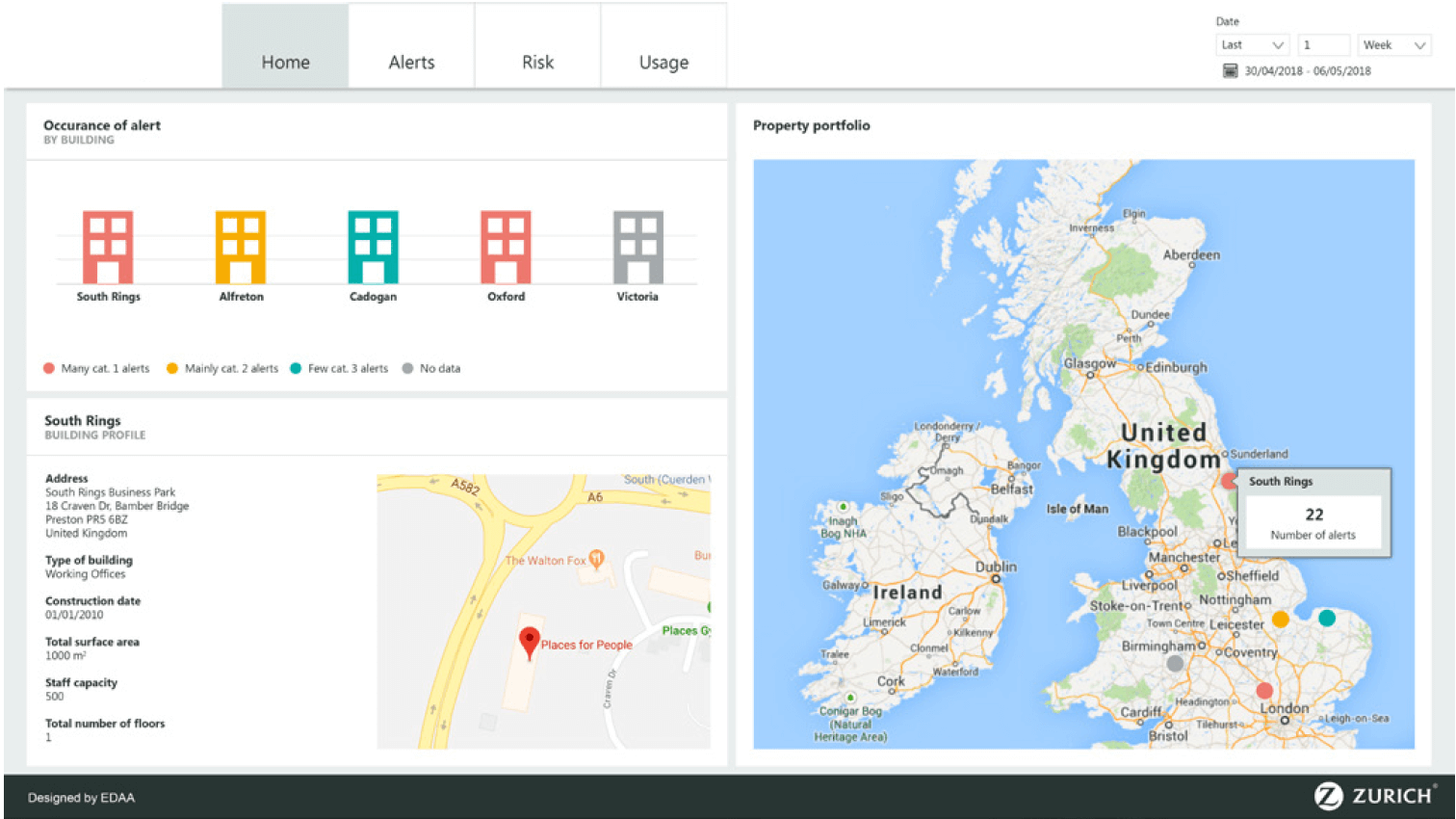
- Alert occurrences
- Property portfolio
- Building details
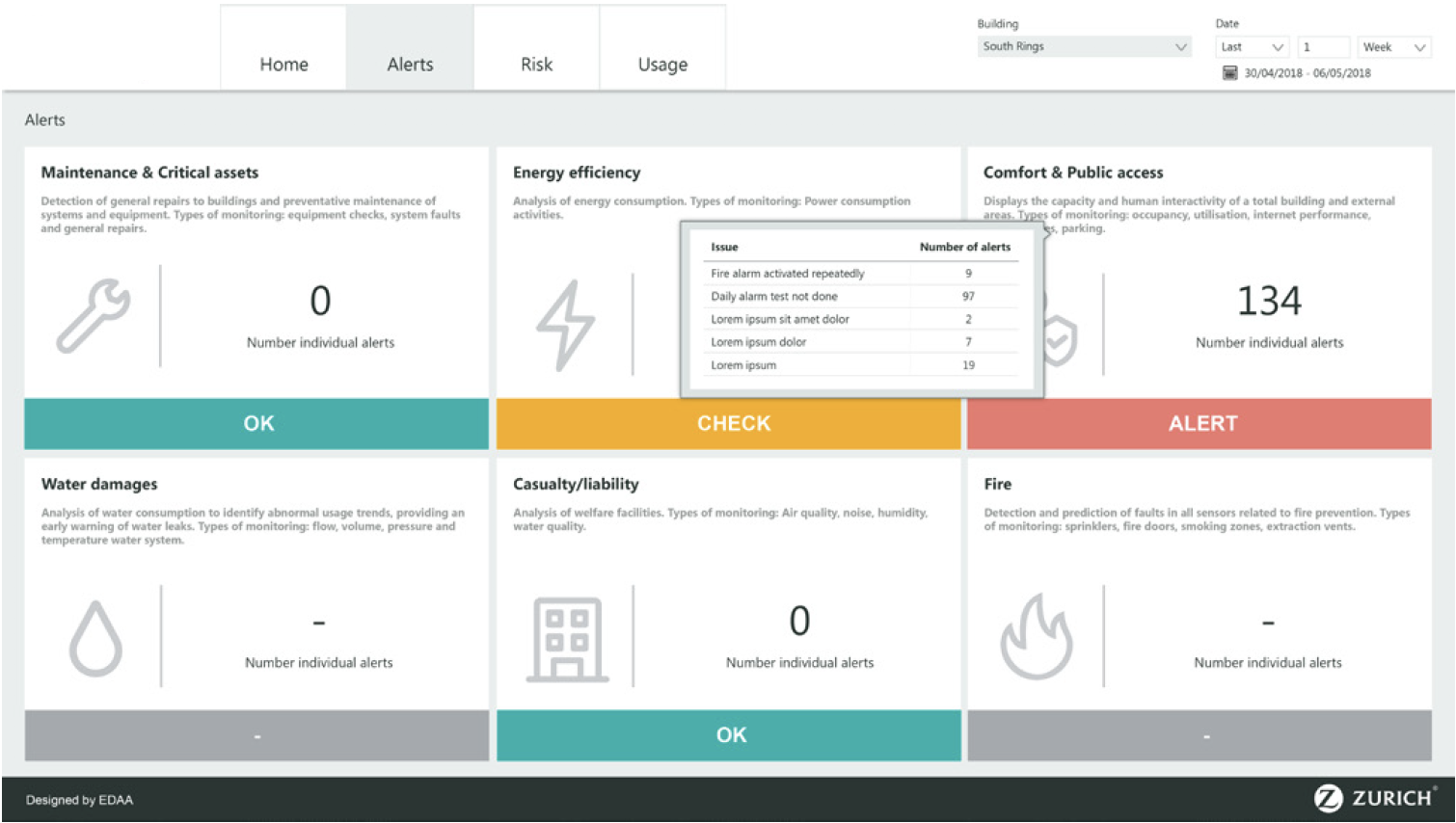
- Alerts category overview
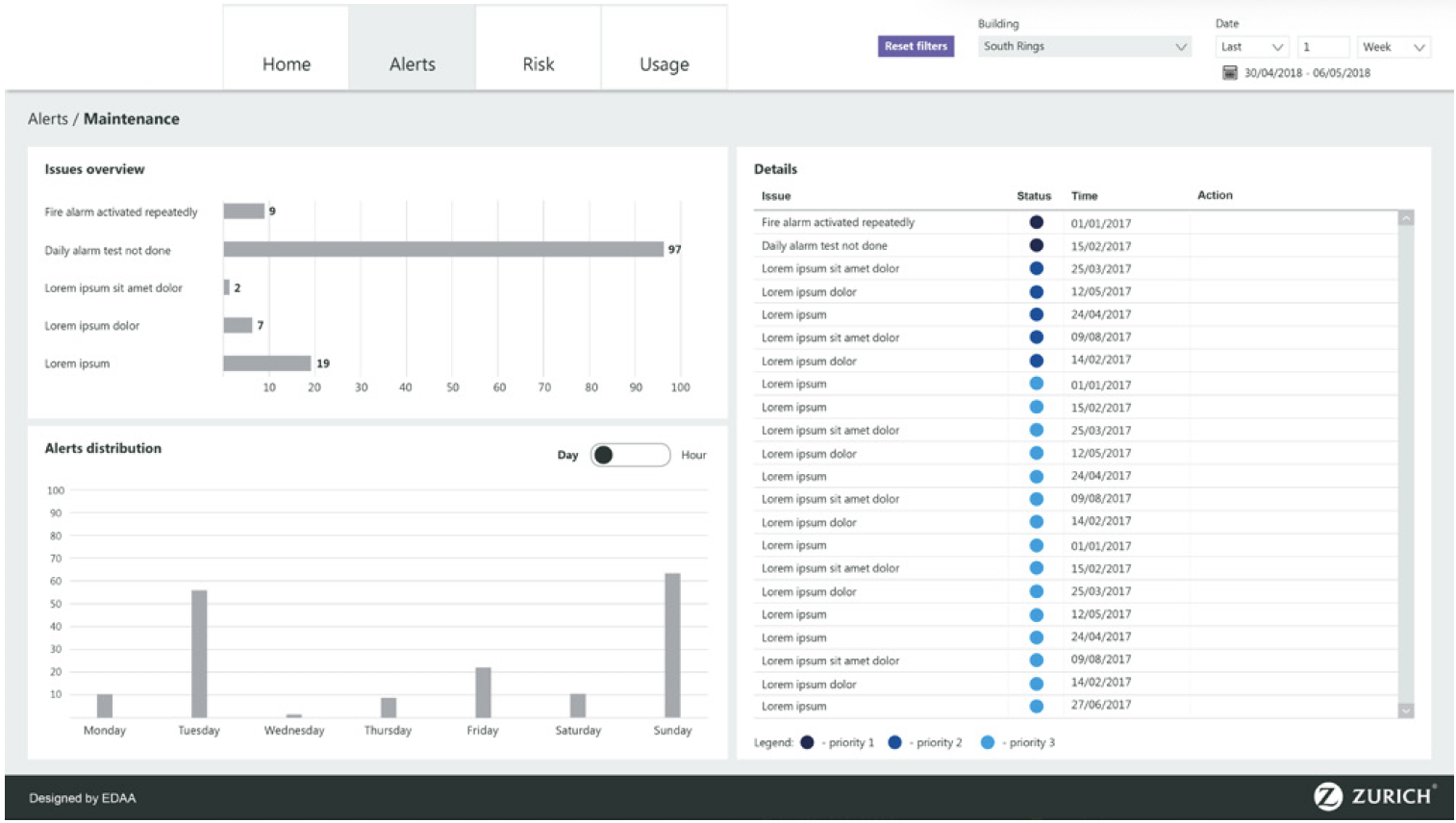
- Drilldown to issues overview
- Alerts distribution
- Issues status
- Recommended actions
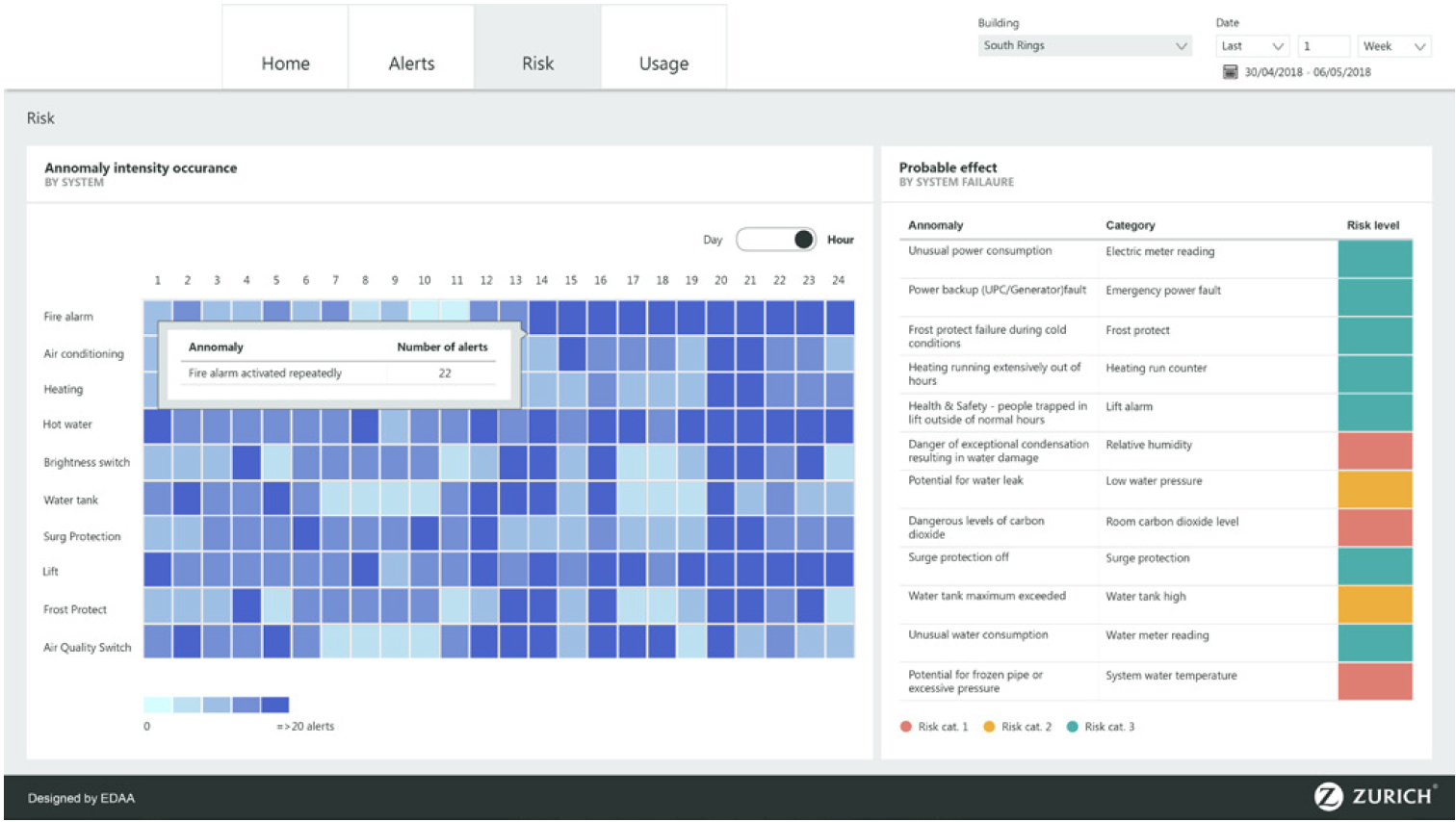
- Anomaly intensity occurance
- Probable effect by system failaure
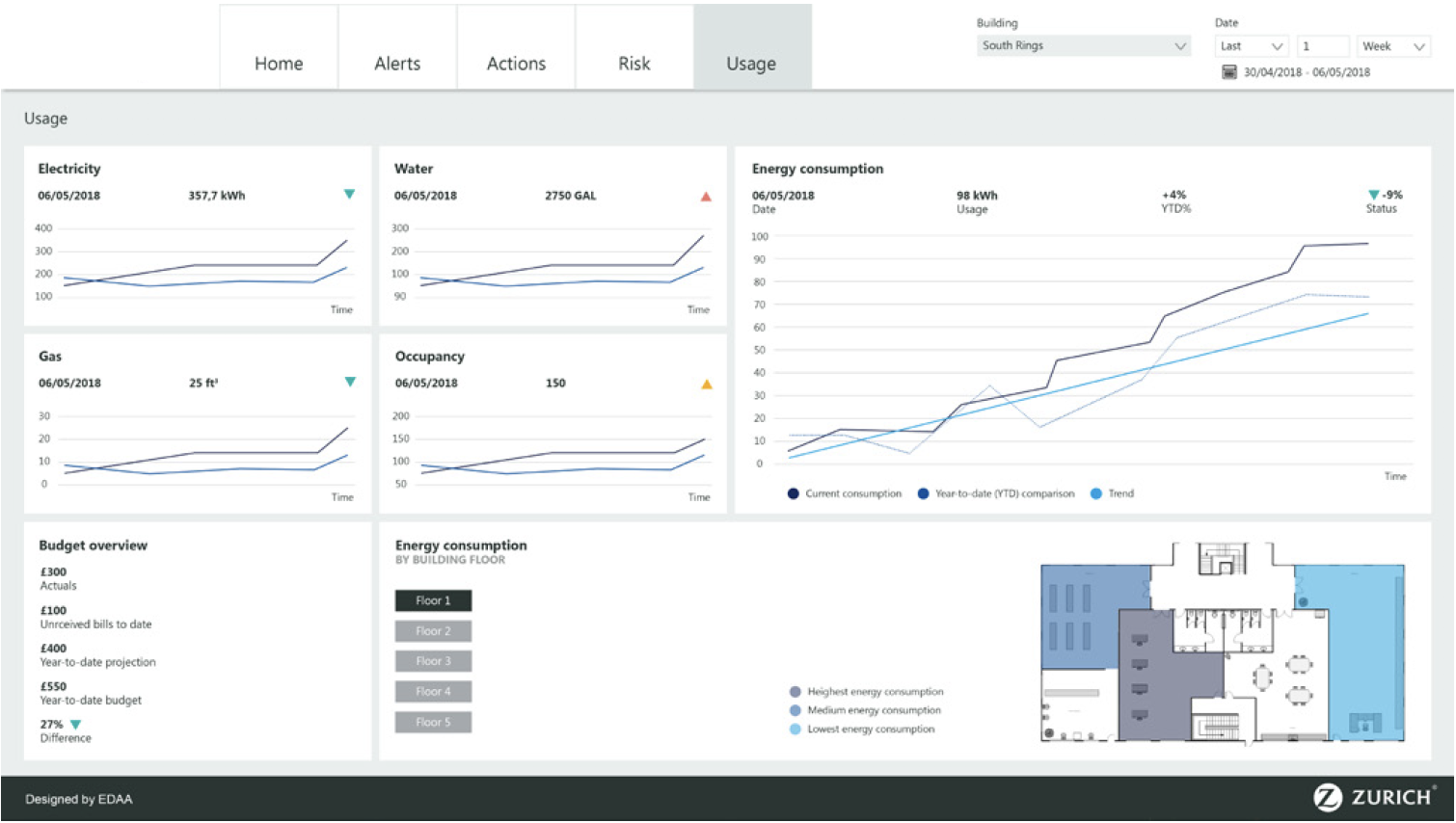
- Energy consumption
- Electricity, water, gas and occupancy status
- Budget overview
Buildings with the power of IoT
- Using IoT data to make informed decisions to optimize the experience of occupants, staff and management.
- With systems optimization, better facilities management and occupant safety, smarter buildings can streamline business processes and expand profits.
- Solution that allows to optimize maintenance processes, reduce energy footprint and better manage building space.